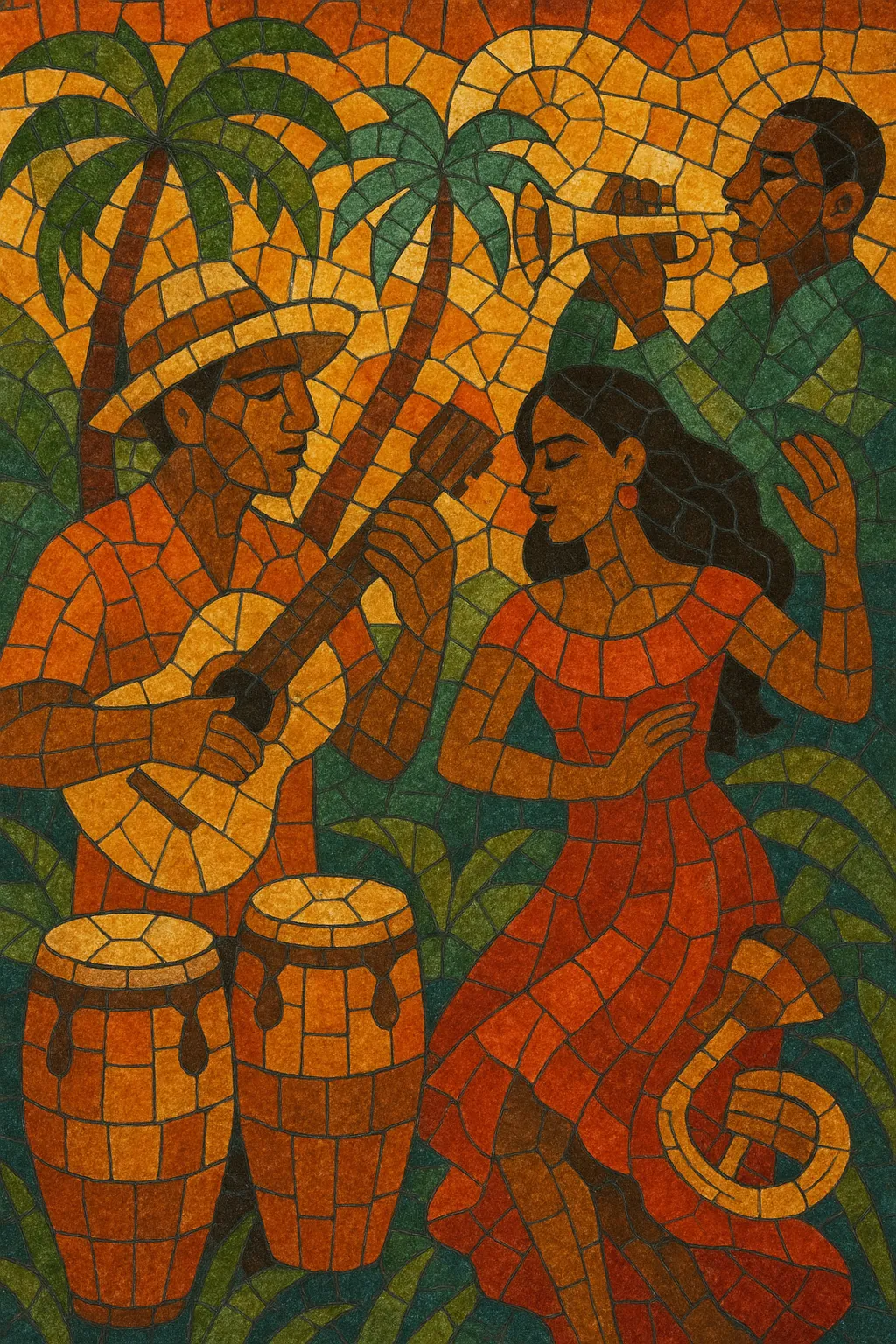Tropical music (música tropical) is an umbrella for dance-oriented Afro-Caribbean and coastal Latin American styles that were popularized across the Spanish-speaking world in the mid‑20th century.
It blends African-derived polyrhythms and percussion with horn-led orchestras, call-and-response vocals, and catchy, romantic choruses. Typical repertoires mix cumbia, porro, merecumbé, son, mambo, merengue, pachanga, bolero, and related rhythms, presented by big bands or compact combos aimed squarely at social dancing.
Beyond a single beat or tempo, the hallmark is a bright, syncopated groove (often organized around the clave), tumbao bass lines, montuno piano patterns, and sectional brass “mambos.” Over time, tropical music absorbed electric instruments and studio production while keeping its festive, coastal character.
The concept of “música tropical” coalesced in the 1940s as radio stations, ballrooms, and record labels in Colombia and the wider Caribbean marketed a broad set of Afro‑Caribbean dance musics under one banner. Colombian labels (notably Discos Fuentes in Medellín) packaged coastal sounds such as cumbia and porro alongside Cuban son, mambo, and bolero, presenting them with horn sections and dance‑band arrangements for urban audiences.
Big bands and compact orquestas became the standard, featuring trumpets, trombones, saxophones, and a percussion battery (congas, bongos, timbales, güiro, maracas, claves). Repertoires moved fluidly between cumbia, porro, merecumbé, pachanga, danzón‑mambo, and bolero, with bright, syncopated grooves tailored for social dancing. The style spread quickly throughout Latin America—on radio, jukeboxes, and touring circuits—taking hold in Mexico, Venezuela, Peru, and Argentina as a catch‑all for Caribbean rhythms.
As salsa ascended from New York and the Caribbean, the commercial category of “tropical” broadened to include salsa bands and, later, merengue booms. Colombian tropical orchestras modernized with electric bass, keyboards, and studio effects, while keeping dance‑floor energy and call‑and‑response coros. The term “tropical” increasingly functioned as an industry and chart label for Caribbean‑rooted Latin dance music.
Digital production and global streaming revived and recontextualized tropical repertoires. Classic orchestras coexist with pop‑leaning “tropical” fusions and DJ‑driven remakes, while cumbia-derived styles (from cumbia pop to digital cumbia) spread internationally. Today, “tropical” remains a practical umbrella in media and charts, signaling bright, dance‑centric Latin grooves rooted in Afro‑Caribbean rhythm and orchestral punch.


